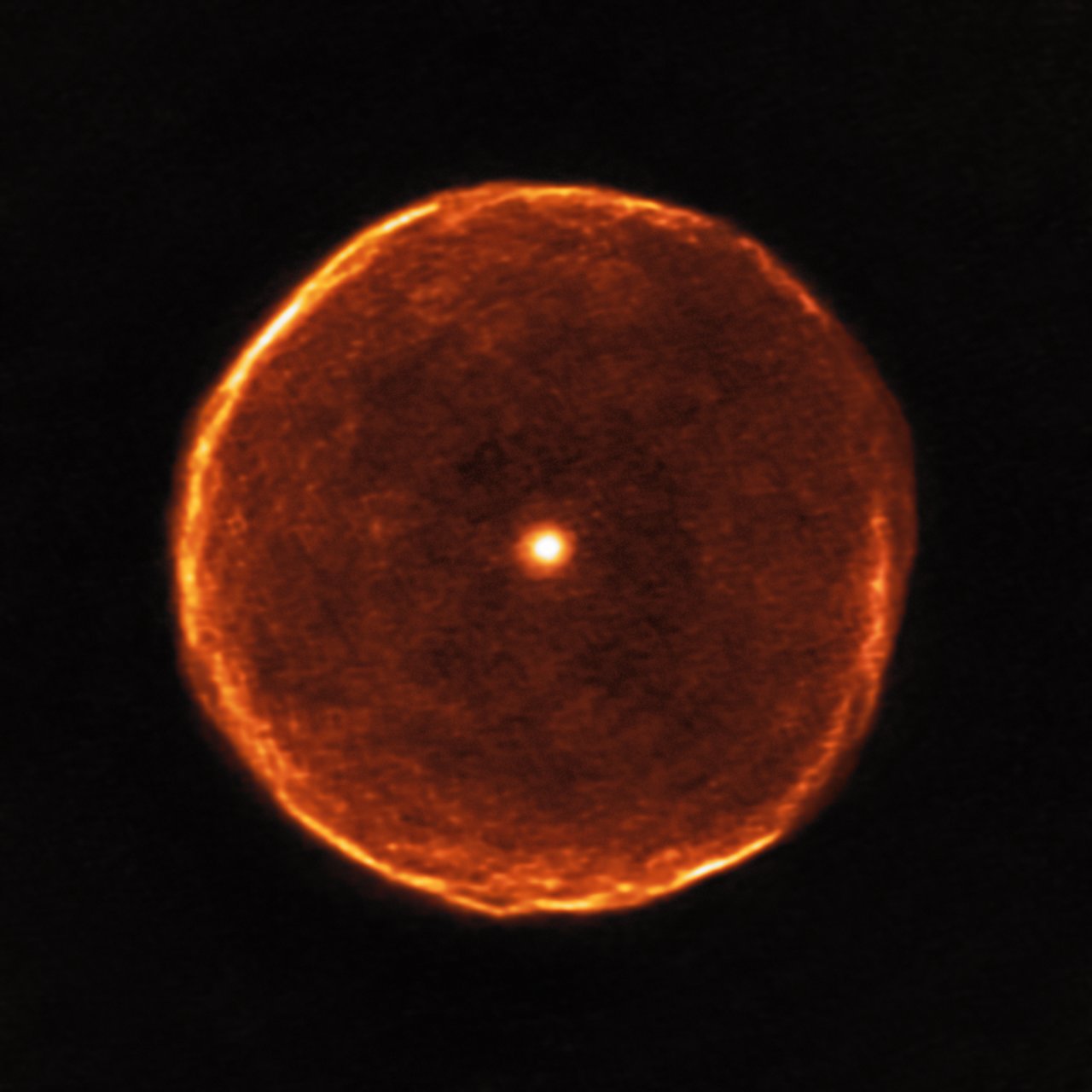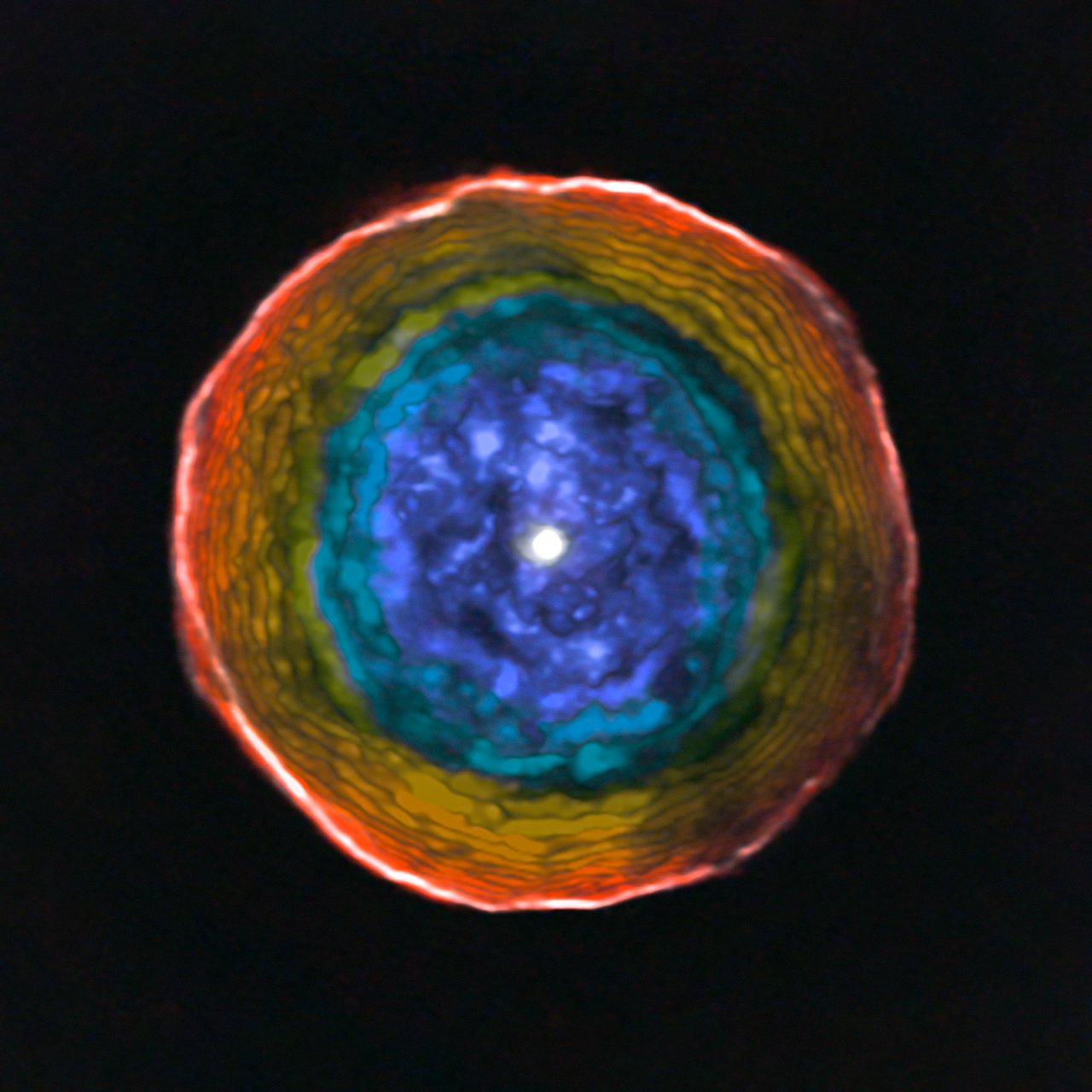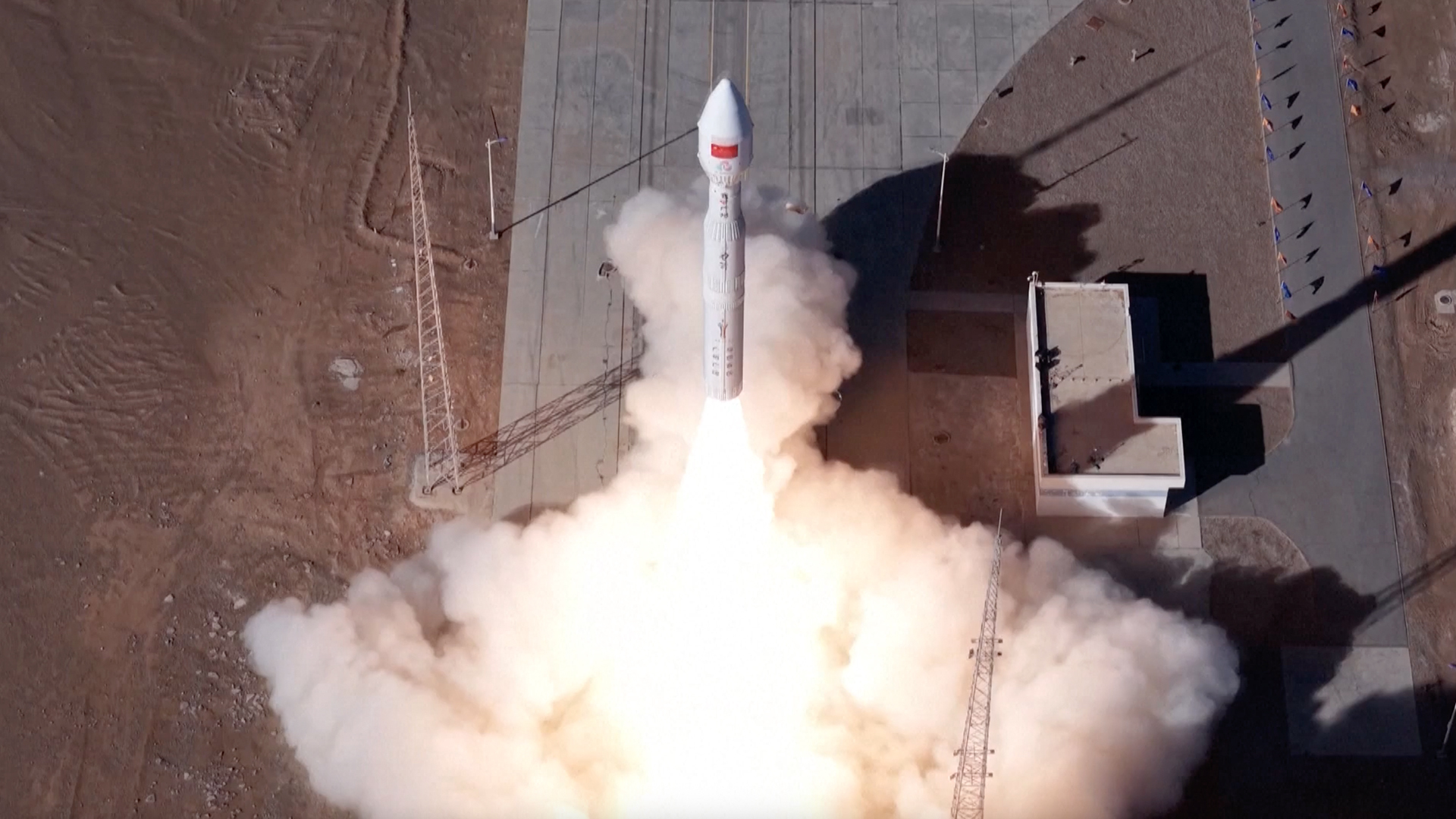Glowing Red Eye: Cosmic Bubble Surrounds Odd 'Carbon Star'
Gorgeous new imagery shows the enormous, glowing bubble that a strange, dying red star has blown around itself.
The huge star, known as U Antliae, lies about 900 light-years from Earth, in the southern constellation Antlia (the Air Pump). U Antliae has burned all the hydrogen and helium in its core and has therefore moved on to the "asymptotic giant branch" (AGB), the last major step in the life cycle of a sun-like star before it becomes a superdense white dwarf.
U Antliae is a carbon star, an AGB star whose atmosphere contains more carbon than oxygen.
A few millennia ago, U Antliae erupted in a spasm of activity that generated a big bubble, a surprisingly thin structure that astronomers have now studied using the European Southern Observatory's Atacama Large Millimeter/submillimeter Array (ALMA), a network of radio telescopes in northern Chile. [Amazing Space Photos by the ALMA Observatory]
"Around 2,700 years ago, U Antliae went through a short period of rapid mass loss," ESO officials wrote in a statement. "During this period of only a few hundred years, the material making up the shell seen in the new ALMA data was ejected at high speed. Examination of this shell in further detail also shows some evidence of thin, wispy gas clouds known as filamentary substructures."
ALMA captured the bubble in multiple wavelengths of light, producing a 3D "data cube" that researchers have mined in detail. For example, the imagery shows gases in the bubble moving toward or away from the observer at different speeds, ESO officials said.
Analyzing such stellar bubbles could help astronomers better understand the evolution of stars and galaxies, ESO officials added.
Breaking space news, the latest updates on rocket launches, skywatching events and more!
"Shells such as the one around U Antliae show a rich variety of chemical compounds based on carbon and other elements," the officials wrote in the same statement. "They also help to recycle matter and contribute up to 70 percent of the dust between stars."
The new ALMA imagery is part of a study, led by Franz Kerschbaum of the University of Vienna, that has been accepted for publication in the journal Astronomy & Astrophysics.
Follow Mike Wall on Twitter @michaeldwall and Google+. Follow us @Spacedotcom, Facebook or Google+. Originally published on Space.com.

Michael Wall is a Senior Space Writer with Space.com and joined the team in 2010. He primarily covers exoplanets, spaceflight and military space, but has been known to dabble in the space art beat. His book about the search for alien life, "Out There," was published on Nov. 13, 2018. Before becoming a science writer, Michael worked as a herpetologist and wildlife biologist. He has a Ph.D. in evolutionary biology from the University of Sydney, Australia, a bachelor's degree from the University of Arizona, and a graduate certificate in science writing from the University of California, Santa Cruz. To find out what his latest project is, you can follow Michael on Twitter.


